Attic insulation is a type of insulation that you install in your attic space. insulating your attic can help protect your home from temperature extremes, and reduce heating and cooling costs by lowering the energy needed for warm-weather comfort.
Insulation also guards against moisture damage caused by rain or snow that seeps into unprotected areas such as eaves or soffits. so well, if you are looking for perfect attic insulation methods, you came right place.
When choosing the best insulation for your home, you need to know where it will be installed and what R-value (a measure of thermal resistance) is appropriate.
According to energystar: insulation is rated by its R-Value, which indicates how well the material resists heat passing through it. The higher this number is, the better your home's thermal performance will be
Other factors to consider may include the impact on indoor air quality, life cycle costs (including installation if you're doing it yourself), content made from recycled materials, and how much carbon is embodied in the material.
Homeowners easily implement some insulation strategies, while others require professional installation.
That's why should you continue with this article, here we are discussing on several points such as how attic insulation works, types of insulating, types of materials and best attic insulating methods.
Table Of Content
How Attic Insulation Works
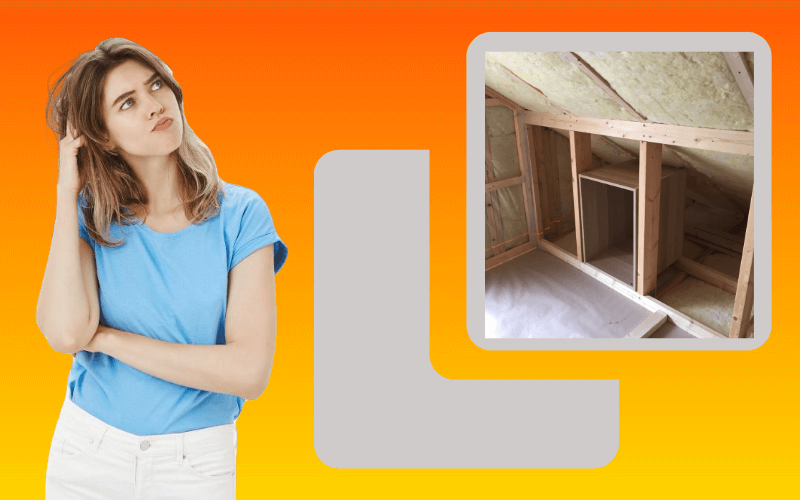
Understanding insulation may be more straightforward if you have an understanding of heat flow. Conduction, convection, and radiation are three ways that heat energy travels in the atmosphere.
Conduction occurs when heat moves through a material from the area where it is concentrated to an area with less concentration.
Convection is the process by which heat spreads from one place to another through liquids and gases (such as wind).
Radiation is energy emitted as waves from a hot object that can make contact with another object or person.
Heat flows easily in most materials because atoms move quickly in response to any temperature difference.
When there’s no barrier between two surfaces, air or water vapor on one side will eventually cool the surface enough so that atoms stop moving and no longer carry away more heat than they take on board.
Pro Tip
Most common insulation materials function to impede heat transfer. or convection. Radiant barriers and reflective insulation systems , on the other hand, are designed to reduce radiant heat gain. They do this by reflecting longwave radiation (from things like sunlight) while still allowing for transmission of short wavelength radiation (from sources such as candle flames). To be effective these surfaces must be in contact with an air space; otherwise they will just reflect hot air back onto itself by energystar
R-value
The insulating materials used in constructing a building’s walls, floors, and ceilings are measured or rated for their ability to block conductive heat flow by means of their thermal resistance—often referred to as R-value.
The higher the R-value, the better the insulation. The R-value depends on three factors: what type of insulation is used (for example fiberglass or foam), how thick it is and at what density it was manufactured.
As insulation's R-value fluctuates based on factors such as heat, moisture, and age.
When calculating the total R-value of a multilayered installation, add together the individual values for each layer.
Pro Tip
The U.S. Department of Energy recommends that you maintain the following R-Value in your attic: In southern climates, install insulation with an R-Value of 20 to 30. In northern climates, install insulation with an R-Value of 27 to 40, R-38 for cold climates (below -20°F) and R-30 for moderate climates (between 20°F and 32°F) ICCs
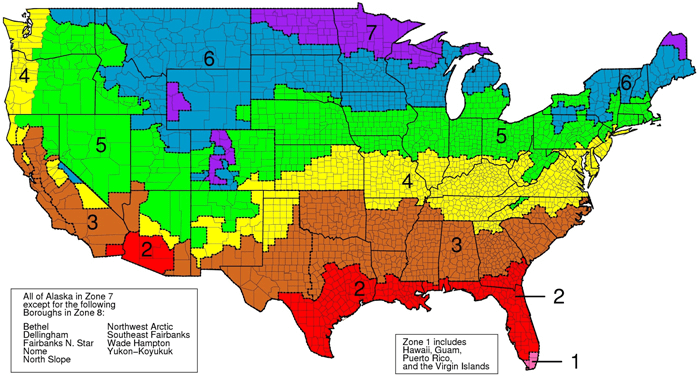
Material
The materials used in insulation range from bulky fiberglass, rock wool, cellulose and natural fibers to rigid foam boards and sleek foils.
In a building cavity, bulky insulation resists conductive heat flow, but is not very effective at reducing convective heat loss.
Rigid foam boards are made of a material that traps air or another gas to resist heat flow.
Radiant barriers and reflective insulation systems deflect radiant heat from your living space, making them perfect for cooling climates.
In addition to cements and phenolic foams, you can also get vermiculite/perlite mixes.
Recommended reading: Insulation Materials
Here is unordered list of insulating materials:
- Fiberglass
- Cellulose
- Polystyrene
- Mineral Wool
- Cotton Or Denim Insulation
- Foam boards or foam blocks
- Foil-faced kraft paper
- Cardboard
- Cementitious foam
- Straw core
- Natural fibers
- Phenolic foam
- Polyisocyanurate
- Polyurethane
- Perlite
- Insulation facings
While fiberglass is a popular choice for attic insulation, many people also choose loose fill, spray foam, or cellulose. To help you find the best product for your situation, we've looked into a few options on the market.
What are the different types of attic insulation
Now, I know what you're thinking - "Insulation? That's not very exciting!" But trust me, once you know the ins and outs (get it?) of insulation, you'll be the life of the party.
Before we dive into the different types, let's get some official data on the subject.
According to Consumer Reports, properly insulating your attic can save you up to 20% on your heating and cooling bills.
That's right, folks - insulation can be a real money-saver! Plus, it can make your home more comfortable by reducing drafts and keeping the temperature consistent.
Now, let's talk types. There are a few different options when it comes to attic insulation, so let's break them down:
- Fiberglass insulation: This is one of the most common types of insulation and is made from tiny glass fibers. It comes in batts or rolls and can be installed between joists or on top of existing insulation.
- Cellulose insulation: This type is made from recycled paper products and is treated with fire retardants. It can be blown in or installed as batts and is a good option for hard-to-reach spaces.
- Spray foam insulation: This type is applied as a liquid and expands to fill the space. It creates an air-tight seal and can be a good option for older homes with lots of air leaks.
- Radiant barrier insulation: This type is installed on the underside of the roof and reflects heat away from the home. It can be a good option for homes in hot climates.
what are the benefits of attic insulation
So what are the benefits, you ask? Well, let me tell you:
- Lower energy bills: This is probably the most obvious benefit, but it's worth mentioning. Properly insulating your attic can help reduce your heating and cooling costs by up to 20%. Who doesn't love saving money, am I right?
- Increased comfort: Insulation can help regulate the temperature in your home and reduce drafts, making it more comfortable for you and your family. Say goodbye to those pesky cold spots and hello to cozy evenings at home.
- Improved indoor air quality: Insulation can also help reduce the amount of dust, pollen, and other allergens that enter your home. This is especially important for those with allergies or respiratory issues.
- Noise reduction: Did you know that insulation can also help reduce noise from outside? If you live in a noisy neighborhood or near a busy street, insulation can help create a more peaceful and quiet home.
- Environmental benefits: By reducing your energy usage, insulation can also help reduce your carbon footprint and make your home more eco-friendly. So not only are you saving money, you're also doing your part for the planet.
is attic insulation necessary
we're tackling the question that's been on everyone's mind: is attic insulation necessary?
Some people might think it's just a fancy upgrade, but I'm here to tell you that attic insulation is an absolute must for any home.
And don't just take my word for it - let's get some official data to back it up.
According to the U.S. Department of Energy, about 90% of homes in the United States are under-insulated.
That's right, folks - most of us are living in homes that are wasting energy and money due to inadequate insulation.
In fact, the DOE recommends that homes in most parts of the country have at least 10-14 inches of attic insulation.
is attic insulation a good investment
Now, we're tackling a question that's on a lot of people's minds: is attic insulation a good investment? And let me tell you, my friends - the answer is a resounding YES.
But don't just take my word for it - let's look at some official data.
According to a report from the National Association of Home Builders, adding insulation to an attic is one of the top home improvement projects with the highest return on investment.
In fact, homeowners can expect to recoup about 116% of the cost of the project when they sell their home.
how much insulation do i need in my attic
how much do you actually need up there? And as always, we've got the data to back it up.
According to the US Department of Energy, the recommended insulation level for most attics is between R-38 and R-60.
Now, if you're scratching your head and wondering what in the world "R-38" means, let me break it down for you: it's a measure of thermal resistance, or how well insulation can resist heat flow.
The higher the R-value, the better the insulation.
But wait, there's more! The amount of insulation you need also depends on your climate zone.
The DOE has divided the United States into eight climate zones, and the recommended R-value for your attic will vary based on where you live.
For example, if you live in a colder climate like Minnesota, you'll want to aim for an R-value of between R-49 and R-60.
But if you're in a warmer climate like Florida, you can get away with a lower R-value of between R-30 and R-38.
So how do you figure out what R-value you need for your attic? Well, there are a few factors to consider, including your climate zone, the type of insulation you're using, and the thickness of the insulation.
But don't worry, you don't have to do the math yourself - there are plenty of online calculators and guides that can help you figure out how much insulation you need based on your specific situation.
And of course, if you're still not sure, you can always consult with a professional insulation contractor who can assess your attic and recommend the best insulation level for your home.
how much does attic insulation cost
Now, we're tackling another important question when it comes to attic insulation: how much is it gonna cost you?
And as always, we've got the data to give you a clear idea of what to expect.
According to a report by HomeAdvisor, the average cost to insulate an attic is $1,700.
Of course, this number can vary based on a number of factors, including the size of your attic, the type of insulation you choose, and the region you live in.
Let's break it down a bit further.
Fiberglass batt insulation is one of the most common types of insulation used in attics, and it typically costs between $0.64 and $1.19 per square foot, according to Fixr.
For an average-sized attic of 1,000 square feet, that would come out to a total cost of between $640 and $1,190.
Spray foam insulation, on the other hand, can be more expensive, costing between $1.50 and $3.50 per square foot, according to the same Fixr report.
For that same 1,000 square foot attic, you're looking at a cost of between $1,500 and $3,500.
Now, it's worth noting that while spray foam insulation may be more expensive up front, it can provide greater energy savings over time.
So if you're looking to make a long-term investment in your home's energy efficiency, spray foam insulation may be worth the extra cost.
Of course, these are just general estimates, and the best way to get an accurate idea of how much attic insulation will cost for your specific home is to get quotes from insulation contractors in your area.
how long does attic insulation last
Builders, fiberglass batt insulation can last for up to 100 years if it's installed properly and not disturbed.
That's right - 100 years! Of course, this assumes that the insulation remains in good condition and is not damaged by moisture, pests, or other factors.
Cellulose insulation, which is made from recycled paper, has a slightly shorter lifespan of around 20-30 years, according to the same report.
Again, this assumes that the insulation is installed properly and remains in good condition.
Spray foam insulation, which is becoming increasingly popular thanks to its energy-saving benefits, can last for up to 80 years, according to a report by the Spray Polyurethane Foam Alliance.
However, it's worth noting that spray foam insulation can deteriorate over time if it's exposed to UV light, so it's important to protect it with a UV-resistant coating.
Of course, these are just general estimates, and the lifespan of your attic insulation will depend on a variety of factors, including the type of insulation, the installation quality, and the conditions in your attic.
It's always a good idea to have your insulation inspected by a professional every few years to ensure that it's still in good condition and providing adequate energy savings.
What to Consider When Choosing the Best Attic Insulation

Installing attic insulation is essential to keep your home cool in the summer and warm in the winter.
When choosing the best attic insulation, there are several factors to consider, including insulation material, R-value, installation type, and cost.
- R-Value: Insulation's R-value indicates how well it resists heat flow. The higher the R-value, the better the insulation is at keeping your home cool in the summer and warm in the winter. Your local building codes may require a specific R-value for your attic insulation.
- Insulation methods: Attic insulation can be installed in two ways: rolled or loose-fill. Rolled insulation is easy to install and is often used for retrofits or renovations. Loose-fill is good for hard-to-reach spaces, like around pipes or ducts. Both types of insulation come in batts or rolls.
- Material: you have several materials to choose from. The most common are fiberglass, cellulose, and foam. Fiberglass is a popular choice because it’s affordable and easy to install, while cellulose is a great option for those who want an eco-friendly insulation. Foam is typically more expensive, but it can offer superior thermal protection.
- Price : The cost of attic insulation will depend on the type of material you choose, the R-value you need, and the size of the area you’re insulating. It’s important to shop around and compare prices before making your decision.
- Irritation:
- How much attic insulation is recommended? : There are a few ways to determine how much insulation you need for your attic. One way is to measure the ceiling height in inches, then multiply that number by 150.
- Location: If you live in a northern climate, where heating systems tend to run year-round, look for a high R-value with low conductivity. If you live in warmer climates where cooling systems are often running during the summer months, find an insulation with medium conductivity and a low or medium R-value.
Insulating your attic is an important step in protecting your home from temperature extremes and moisture damage while reducing energy costs.
By considering insulation material, R-value, installation type, and cost, you can choose the best attic insulation for your needs.
For instance, if money isn’t really a concern, installing high quality foam insulation could help keep costs down long term due to its durability and lifespan.
3The Best Attic Insulation Solutions for Cold and Hot Climates
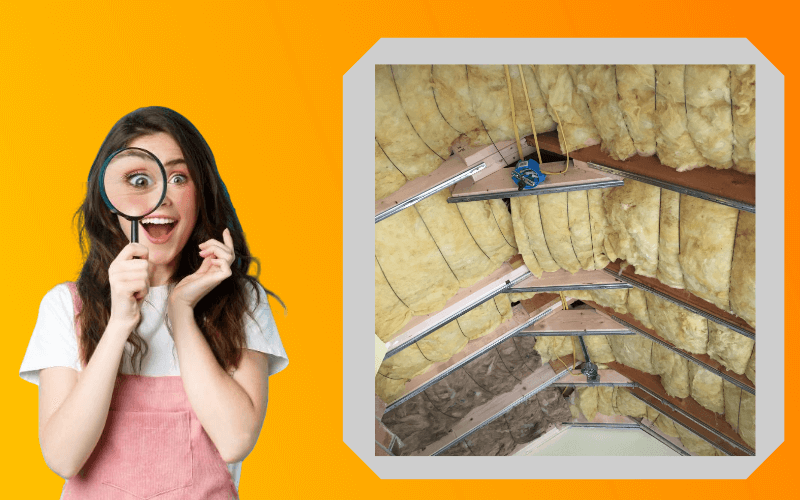
Attic insulation is essential for creating a comfortable living environment and protecting your home from temperature extremes and moisture damage. While insulation comes in many forms, there are four primary ways to improve the insulation of your attic for ultimate home protection.
3.1 Foam Boards or rigid foam

Foam boards, or rigid foam insulation are a great option for insulating your attic.
They come in large panels of varying thickness that can be used to insulate the walls and ceilings of your attic space.
Unlike fiberglass insulation, foam board is completely water-resistant and provides superior thermal protection.
The downside to foam boards is their cost, but they are well worth the investment.
Installing foam boards requires some skill, as the panels must fit together snugly to be effective.
Begin by measuring the area you want to insulate and cutting the foam boards to size. Place the panels on the wall or ceiling of the attic and attach them with foam adhesive or construction adhesive.
For extra protection, you can also use screws or nails to secure the foam boards. Be sure to leave a gap of at least 3/8 between each panel to allow for air circulation.
Foam boards provide excellent insulation for your attic, but it’s important to be aware of their fire safety rating.
Foam boards are combustible and should not be used in attics with an open flame source like a wood-burning stove or fireplace.
Additionally, foam boards may emit an odor when first installed and should be tested for off-gassing prior to use.
3.2 Loose-fill and blown-in

When it comes to attic insulation, loose-fill and blown-in options are a great choice.
Loose-fill insulation is typically made from cellulose, mineral wool, or fiberglass and is poured in loose and then fluffed up.
This type of insulation is ideal for those hard-to-reach areas and can provide great coverage.
Blown-in insulation is also an excellent option. This type of insulation is made from fiberglass or cellulose and is blown into the attic using specialized machines.
It is best used for attics with difficult access points as well as areas with complex shapes. Blown-in insulation also has the advantage of being able to be easily adjusted to fit in all types of spaces.
Both types of insulation are energy efficient and can provide great protection against extreme temperatures.
They also help prevent moisture damage, reducing the risk of mold growth and other issues.
However, it’s important to note that both loose-fill and blown-in insulation require professional installation and are not always the most cost-effective options.
3.3 Sprayed foam and foamed-in-place
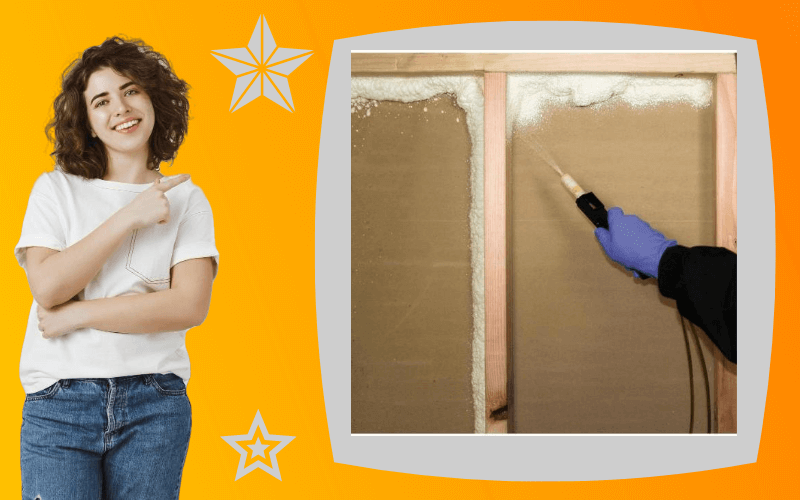
Sprayed foam and foamed-in-place insulation are two popular methods for insulating your attic.
Sprayed foam insulation is an efficient way to fill irregular spaces and cover large surface areas, while foamed-in-place insulation is sprayed into enclosed cavities and helps reduce air infiltration.
Both forms of insulation are cost effective, energy efficient, and easy to install.
Sprayed foam insulation is a great choice for attics with irregular surfaces or multiple pipes, because it can be sprayed directly onto the walls or ceiling and fill in the gaps around them.
It's also lightweight, meaning you won't have to worry about too much weight being added to your attic structure.
The downside to this form of insulation is that it can become brittle over time and may need to be replaced more often than other types.
Foamed-in-place insulation is sprayed into enclosed cavities, such as attics, basements, and crawl spaces.
This method helps to reduce air infiltration and create a tighter seal between the interior and exterior of the house.
Foamed-in-place insulation is very effective at keeping out moisture, and it's less likely to become brittle over time.
However, it can be more expensive than some other forms of insulation.
If you're looking to improve the insulation in your attic, both sprayed foam and foamed-in-place are excellent options.
They are both cost effective, energy efficient, and easy to install. However, you should take into consideration their potential downsides before making a decision.
3.4 Blanket: batts and rolls

Adding insulation to your attic can help protect your home from temperature extremes and reduce energy costs.
One of the most common ways to insulate an attic is with blanket insulation, also known as batts and rolls.
Here’s how it works:
Batts and rolls are pre-cut pieces of fiberglass insulation that come in various widths and lengths. These pieces are designed to fit between wall studs, floor joists and ceiling joists.
They can also be used to fill any other gaps or cavities in the attic space.
The key to proper installation of batts and rolls is to make sure they fit snugly against the walls, floors, and ceilings.
If there are any gaps between the insulation and the wood framing, it will significantly reduce its effectiveness.
In addition, you should ensure that the insulation is securely held in place with staples or wire mesh.
For optimal energy savings, consider using two layers of batts and rolls, staggered so that the seams don't line up.
This will ensure that there are no air gaps or spaces where warm or cool air can escape.
Finally, keep in mind that the R-value of insulation is affected by moisture.
If you have a humid attic space, you may need to add an additional layer of insulation or use an insulation product with a higher R-value. With the right combination of insulation products and proper installation.
you can keep your home comfortable year-round while saving money on heating and cooling bills.
4Wrap Up On The Best Attic Insulation Solutions for Cold and Hot Climates
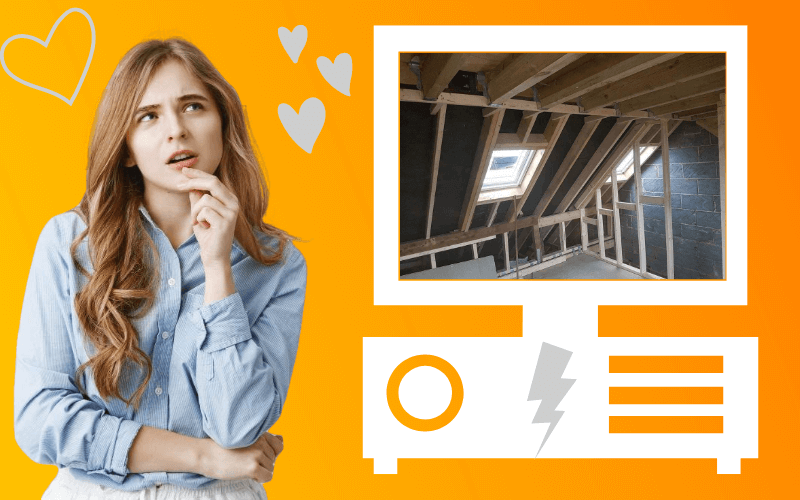
Well, folks, there you have it - four easy ways to improve attic insulation.
As someone who has spent a lot of time in the world of insulation (I know, it's thrilling), let me tell you, these steps can make a huge difference in the comfort of your home and your energy bill.
Plus, it's always satisfying to know that you're doing your part for the environment by reducing your energy usage.
Now, I know some of you may be thinking, "But I don't have an attic!" Fear not, my friends. These tips can apply to any space that needs better insulation.
Whether you're dealing with a drafty basement, a chilly garage, or a poorly insulated crawl space, these steps can help you get on the right track.
So, get out there and start insulating.
And if you need any more tips or advice, you know who to call (hint: it's not Ghostbusters). Keep things toasty, my friends.
If you are still confused about what type of insulation you should use, we highly recommend reading up on all types of insulation products. Your local contractor can also help guide you through the process of choosing the best product for your needs and budget.
But our favorite method is Blanket because it is affordable, easy to install, improves your home’s efficiency, and creates a healthier living space.
Frequently Asked Questions

What is the recommended R-value for attic insulation?
The National Association of Home Builders recommends a minimum of 13 in order to reduce heat transfer through your roof and help you save money on energy bills. Read more about calculating your R-value here
Which Attic Insulation Is Best?
Fiberglass is the most common attic insulation. It’s made from glass fibers that have been sprayed with an adhesive and compressed into sheets. The material is light and easy to install, but it doesn’t provide much thermal resistance. As a result, fiberglass can be quite expensive for the benefits it provides.
Is it possible to put too much insulation in the attic?
Yes, you can put too much insulation in your attic. If there is too much insulation in the attic, it will trap moisture inside and cause mold growth or even mildew. The problem is that the moisture won’t be able to escape through the roof or walls because it can’t get through all of the insulation. As a result, any water vapor that comes into contact with the cooler surfaces of your home will condense on them and turn into water droplets.
Is there an easier way to insulate my attic?
Yes, there is. You can use spray foam insulation, which is easy to apply and forms a tight seal that can help you save on energy costs in the long run. It is also a great option for hard-to-reach areas in the attic, as it expands and fills any gaps or crevices it comes into contact with. Spray foam is more expensive than fiberglass insulation, but it can provide a longer-lasting solution.
Should you remove the old attic insulation before adding new insulation?
If you’re removing old insulation and replacing it with something new, then yes – removing the old stuff first is best. But if you are just adding insulation onto existing layers, then no.











